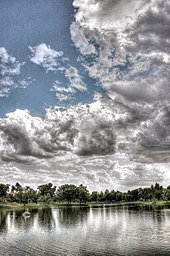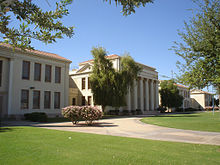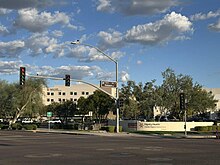

Surgical errors can have devastating consequences for patients, leading to serious injuries or even death. There are several common types of surgical errors that can occur during a procedure, often resulting from negligence or incompetence on the part of medical professionals.
One common type of surgical error is wrong-site surgery, where the procedure is performed on the wrong part of the body. This can happen due to miscommunication among staff members, failure to properly mark the surgical site, or inadequate pre-operative verification procedures. Wrong-site surgery can lead to unnecessary pain and suffering for the patient, as well as additional surgeries to correct the mistake.
Another common type of surgical error is anesthesia-related complications, such as administering too much or too little anesthesia, failing to monitor the patient's vital signs properly during surgery, or using defective equipment. Anesthesia errors can result in serious health risks for the patient, including brain damage, organ failure, or even death.
Inadequate post-operative care is another frequent cause of surgical errors. This can include failing to provide proper instructions for follow-up care at home, neglecting to monitor for signs of infection or other complications after surgery, or discharging the patient from the hospital too soon. Inadequate post-operative care can prolong recovery time, lead to additional medical expenses, and increase the risk of further health problems for the patient.
Other common types of surgical errors include performing unnecessary surgeries, leaving foreign objects inside the body during surgery (such as sponges or instruments), and making mistakes during procedures like cutting a nerve or artery accidentally. These errors can have serious consequences for patients and may require additional surgeries to correct.
If you believe you have been a victim of a surgical error, it is important to seek legal counsel to understand your rights and options for pursuing compensation through surgical error litigation. A skilled attorney can help you navigate the complex legal process and fight for justice on your behalf.
Surgical errors can have devastating consequences for patients and their families, leading to serious injuries, complications, and even death. These errors can occur for a variety of reasons, including human error, miscommunication among medical staff, fatigue, lack of experience or training, equipment failure, and more.
One common cause of surgical errors is miscommunication among the surgical team. In a high-stress environment like the operating room, it's essential that all team members are on the same page and communicate effectively. Failure to do so can result in misunderstandings, mistakes, and ultimately surgical errors.
Another cause of surgical errors is fatigue. Surgeons and other medical staff often work long hours under intense pressure, which can lead to exhaustion and impair judgment. Fatigue can slow reaction times, decrease attention to detail, and increase the likelihood of making mistakes during surgery.
Lack of experience or training is another significant factor contributing to surgical errors. Surgeons who are not adequately trained or experienced in a particular procedure may be more likely to make mistakes or encounter complications during surgery. It's crucial for surgeons to undergo proper training and ongoing education to ensure they are competent in performing procedures safely.
Equipment failure is also a common cause of surgical errors. Malfunctioning equipment or tools can lead to unexpected complications during surgery, potentially putting patients at risk. It's essential for hospitals and surgical centers to regularly maintain and inspect their equipment to prevent these types of errors from occurring.
Overall, there are many potential causes of surgical errors that can have serious consequences for patients. When these errors occur due to negligence or incompetence on the part of medical staff, patients may seek recourse through surgical error litigation to hold responsible parties accountable for their actions. By understanding the causes of surgical errors and taking steps to prevent them from happening in the future, we can help ensure safer outcomes for patients undergoing surgery.

Understanding medical malpractice laws in Chandler is crucial for both healthcare professionals and patients alike.. These laws are in place to protect individuals from negligence or misconduct on the part of medical practitioners, ensuring that they receive the quality care they deserve. In Chandler, medical malpractice laws outline the responsibilities and obligations of healthcare providers, as well as the rights of patients who have been harmed by their actions.
Posted by on 2024-11-18

If you believe that you have been a victim of medical malpractice, it can be a confusing and overwhelming experience.. It is important to take certain steps to protect your rights and seek justice for any harm that may have been caused by negligent medical care. The first step you should take if you suspect medical malpractice is to gather all relevant documentation related to your medical treatment.
Posted by on 2024-11-18

Choosing the right medical malpractice lawyer in Chandler can be a daunting task, but it is crucial to ensure that you receive the best possible representation for your case.. With so many options available, it's important to take the time to research and find a lawyer who has the knowledge and experience needed to handle your specific situation. One of the first things to consider when selecting a medical malpractice lawyer is their experience in handling similar cases.
Posted by on 2024-11-18

Medical malpractice cases can take many forms, but there are several common types that we see in Chandler and throughout the healthcare system.. These cases often involve a breach of the standard of care that a healthcare provider is expected to provide to their patients. One common type of medical malpractice case is misdiagnosis or delayed diagnosis.
Posted by on 2024-11-18
When it comes to filing a surgical error lawsuit, the legal process can be complex and overwhelming. It's important to understand the steps involved in order to ensure that your case is handled properly.
The first step in filing a surgical error lawsuit is to consult with a qualified attorney who specializes in medical malpractice cases. They will be able to assess the details of your situation and determine if you have a valid claim.
Once you have decided to move forward with your case, your attorney will begin the process of gathering evidence and information related to the surgical error. This may include obtaining medical records, consulting with expert witnesses, and preparing documentation for court proceedings.
Next, your attorney will file a formal complaint with the court outlining the details of the surgical error and seeking damages for any harm or injuries caused. The defendant - typically the surgeon or healthcare facility responsible for the error - will then be served with the complaint and given an opportunity to respond.
Throughout the litigation process, both parties will engage in discovery, which involves exchanging information and evidence related to the case. This may include depositions, interrogatories, and requests for documents.
If a settlement cannot be reached through negotiation or mediation, the case will proceed to trial where both sides will present their arguments and evidence before a judge or jury. The outcome of the trial will determine whether damages are awarded and how much compensation is granted.
Overall, navigating the legal process for filing a surgical error lawsuit requires patience, diligence, and expertise. By working closely with an experienced attorney, you can increase your chances of securing justice and holding those responsible for medical negligence accountable.

When it comes to proving a surgical error case in litigation, having the right evidence is crucial. Surgical errors can have serious consequences for patients, including long-term health problems or even death. In order to successfully prove a surgical error case, there are several types of evidence that may be needed.
One key piece of evidence in a surgical error case is medical records. These records can provide detailed information about the surgery itself, including what procedures were performed and who was involved in the surgery. Additionally, medical records can also show any pre-existing conditions or complications that may have contributed to the surgical error.
Another important type of evidence in a surgical error case is expert testimony. Expert witnesses, such as other surgeons or medical professionals, can help explain complex medical procedures and provide insight into whether or not the surgeon acted negligently during the surgery. Their testimony can be crucial in helping a jury understand the technical aspects of the case.
In addition to medical records and expert testimony, photographic evidence can also be useful in proving a surgical error case. Photos taken during or after the surgery can provide visual proof of any mistakes that were made during the procedure. For example, if a surgeon accidentally left a foreign object inside a patient's body, photos of the object could be used as evidence in court.
Finally, witness statements from nurses, anesthesiologists, or other medical staff who were present during the surgery can also be valuable evidence in a surgical error case. These witnesses may have observed mistakes being made during the surgery and can provide firsthand accounts of what happened.
In conclusion, proving a surgical error case requires gathering various types of evidence such as medical records, expert testimony, photographic evidence, and witness statements. By presenting this evidence in court, patients who have been harmed by surgical errors may be able to hold negligent healthcare providers accountable for their actions and seek justice for their injuries.
When it comes to surgical error litigation, compensation is a key factor in seeking justice for patients who have been harmed due to medical negligence. Surgical errors can have devastating consequences, both physically and emotionally, and it is important for victims to receive the financial support they need to cover the costs of additional medical treatments, rehabilitation, lost wages, and other damages.
Compensation in surgical error cases is meant to provide some level of comfort and security for those who have suffered at the hands of healthcare providers. This can include monetary awards for pain and suffering, loss of quality of life, medical expenses, and more. The amount of compensation will vary depending on the specifics of each case, but it is typically intended to help offset the financial burden caused by the surgical error.
In addition to compensating patients for their losses, pursuing legal action in surgical error cases can also help hold healthcare professionals accountable for their actions. By seeking justice through litigation, patients can help prevent similar errors from occurring in the future and promote greater accountability within the medical community.
Overall, compensation in surgical error cases serves as a way to support victims of medical negligence while also promoting safer practices within the healthcare industry. It is an important aspect of seeking justice and ensuring that those responsible for causing harm are held accountable for their actions.
Proving a surgical error case can be a challenging task for many reasons. There are various obstacles that can make it difficult to show that medical negligence occurred during a surgery.
One of the main challenges in proving a surgical error case is the complex nature of medical procedures. Surgical errors often involve technical details and medical jargon that can be hard for the average person to understand. This makes it challenging to clearly demonstrate where the mistake was made and how it led to harm.
Additionally, there is often a lack of concrete evidence in surgical error cases. In some situations, patients may not have access to their medical records or be able to obtain detailed information about what happened during their surgery. This can make it hard to gather the necessary evidence to support their claim.
Furthermore, doctors and hospitals may try to cover up mistakes or shift blame onto other factors in order to avoid liability. This can make it even more difficult for patients to prove that a surgical error occurred and seek compensation for their injuries.
Overall, proving a surgical error case requires careful investigation, expert testimony, and a thorough understanding of medical procedures. It is important for patients who believe they have been harmed by a surgical error to seek legal guidance from experienced attorneys who can help navigate these challenges and fight for justice on their behalf.
Chandler, Arizona | |
|---|---|
City | |
 Aerial view of Chandler | |
 Location in Maricopa County, Arizona | |
| Coordinates: 33°18′N 111°50′W / 33.300°N 111.833°W | |
| Country | United States |
| State | |
| County | Maricopa |
| Founded | May 17, 1912 |
| Government | |
| • Type | Council-Manager |
| • Mayor | Kevin Hartke[1] |
| Area | |
| • City | 65.55 sq mi (169.77 km2) |
| • Land | 65.48 sq mi (169.58 km2) |
| • Water | 0.07 sq mi (0.18 km2) |
| Elevation | 1,211 ft (370 m) |
| Population (2020)[2] | |
| • City | 275,987 |
| • Estimate (2022)[2] | 280,711 |
| • Rank | US: 78th |
| • Density | 4,226.4/sq mi (1,627.45/km2) |
| • Metro | 4,948,203 |
| • Demonym | Chandlerite |
| Time zone | UTC−7 (MST (no DST)) |
| ZIP Codes | 85224, 85225, 85226, 85286, 85248, 85249 |
| Area code | 480 |
| FIPS code | 04-12000 |
| GNIS feature ID | 2409433[3] |
| Website | www |
Chandler is a city in Maricopa County, Arizona, United States, and a suburb in the Phoenix-Mesa-Chandler Metropolitan Statistical Area. It is the fourth-most populous city in Arizona, after Mesa, Tempe, and Phoenix. Chandler is considered to be a part of the East Valley.
As of the 2020 census, the population of Chandler was 275,987,[2] up from 236,123 at the 2010 census.[4] Chandler is a commercial and tech hub for corporations like Intel, Northrop Grumman, Wells Fargo, PayPal and Boeing.
In 1891, Dr. Alexander John Chandler, a Canadian and the first veterinary surgeon in the Arizona Territory, settled on a ranch south of Mesa and studied irrigation engineering. By 1900, he had acquired 18,000 acres (73 km2) of land and began drawing up plans for a town-site on what was then known as the Chandler Ranch. The town-site office opened on May 16, 1912.
The original town-site was bounded by Galveston Street to the north, Frye Road to the south, Hartford Street to the west, and Hamilton Street to the east.[5] By 1913, a town center was established, featuring the Hotel San Marcos, which also had the first grass golf course in the state. Chandler High School was established in 1914. Chandler was officially incorporated on February 16, 1920, after 186 residents petitioned the Maricopa County Board of Supervisors to approve incorporation.[citation needed]
Most of Chandler's economy was sustained during the Great Depression (though the Depression was to blame for the cancellation of a second San Marcos hotel), but the cotton crash a few years later had a much deeper impact on the city's residents. A. J. Chandler lost his San Marcos hotel to creditors as a result.[6] Later, the founding of Williams Air Force Base in 1941 led to a small surge in population, but Chandler still only held 3,800 people by 1950.[citation needed]
By 1980, the population had grown to 30,000, and it has since paced the Phoenix metropolitan area's high rate of growth, with suburban residential areas and commercial use areas swallowing former agricultural plots. The population has nearly doubled in the last twenty years. Some of this growth was fueled by the establishment of manufacturing plants for communications and computing firms such as Microchip, Motorola and Intel.
According to the 2020 census, Chandler has a total area of 65.55 square miles (169.8 km2), of which 0.07 square miles (0.18 km2), or 0.11%, are listed as water.[2] The center of the city, along Arizona State Route 87, is 22 miles (35 km) southeast of Downtown Phoenix.
Chandler is in proximity to/borders the San-Tan mountain range. The San-Tan mountains are in the jurisdiction of the Gila River Indian Community.
Chandler is divided into three parts: North Chandler, West Chandler and South Chandler, each being divided by the Loop 202 (Santan Freeway) and Loop 101 (Price Freeway).
| Climate data for Chandler, AZ | |||||||||||||
|---|---|---|---|---|---|---|---|---|---|---|---|---|---|
| Month | Jan | Feb | Mar | Apr | May | Jun | Jul | Aug | Sep | Oct | Nov | Dec | Year |
| Record high °F (°C) | 89 (32) |
95 (35) |
99 (37) |
106 (41) |
118 (48) |
116 (47) |
119 (48) |
115 (46) |
113 (45) |
107 (42) |
97 (36) |
86 (30) |
119 (48) |
| Mean daily maximum °F (°C) | 67 (19) |
71 (22) |
77 (25) |
85 (29) |
94 (34) |
104 (40) |
106 (41) |
104 (40) |
99 (37) |
89 (32) |
75 (24) |
67 (19) |
87 (30) |
| Daily mean °F (°C) | 54 (12) |
58 (14) |
63 (17) |
70 (21) |
78 (26) |
87 (31) |
92 (33) |
90 (32) |
85 (29) |
74 (23) |
61 (16) |
54 (12) |
72 (22) |
| Mean daily minimum °F (°C) | 41 (5) |
45 (7) |
49 (9) |
54 (12) |
61 (16) |
70 (21) |
77 (25) |
76 (24) |
70 (21) |
59 (15) |
47 (8) |
40 (4) |
57 (14) |
| Record low °F (°C) | 15 (−9) |
19 (−7) |
24 (−4) |
30 (−1) |
37 (3) |
43 (6) |
54 (12) |
51 (11) |
40 (4) |
30 (−1) |
22 (−6) |
17 (−8) |
15 (−9) |
| Average precipitation inches (mm) | 1.01 (26) |
1.03 (26) |
1.19 (30) |
0.33 (8.4) |
0.17 (4.3) |
0.06 (1.5) |
0.89 (23) |
1.14 (29) |
0.89 (23) |
0.81 (21) |
0.77 (20) |
0.98 (25) |
9.20 (234) |
| Source: The Weather Channel[7] | |||||||||||||
| Census | Pop. | Note | %± |
|---|---|---|---|
| 1930 | 1,378 | — | |
| 1940 | 1,239 | −10.1% | |
| 1950 | 3,799 | 206.6% | |
| 1960 | 9,531 | 150.9% | |
| 1970 | 13,763 | 44.4% | |
| 1980 | 29,673 | 115.6% | |
| 1990 | 89,862 | 202.8% | |
| 2000 | 176,581 | 96.5% | |
| 2010 | 236,123 | 33.7% | |
| 2020 | 275,987 | 16.9% | |
| 2022 (est.) | 280,711 | [8] | 1.7% |
| U.S. Decennial Census[9] | |||
| Race / Ethnicity (NH = Non-Hispanic) | Pop 2000[10] | Pop 2010[11] | Pop 2020[12] | % 2000 | % 2010 | % 2020 |
|---|---|---|---|---|---|---|
| White alone (NH) | 121,168 | 145,724 | 147,119 | 68.62% | 61.72% | 53.31% |
| Black or African American alone (NH) | 5,821 | 10,580 | 15,564 | 3.30% | 4.48% | 5.64% |
| Native American or Alaska Native alone (NH) | 1,628 | 2,715 | 3,850 | 0.92% | 1.15% | 1.39% |
| Asian alone (NH) | 7,345 | 19,119 | 32,710 | 4.16% | 8.10% | 11.85% |
| Pacific Islander alone (NH) | 222 | 365 | 571 | 0.13% | 0.15% | 0.21% |
| Some Other Race alone (NH) | 301 | 369 | 1,237 | 0.17% | 0.16% | 0.45% |
| Mixed Race or Multi-Racial (NH) | 3,037 | 5,443 | 12,679 | 1.72% | 2.31% | 4.59% |
| Hispanic or Latino (any race) | 37,059 | 51,808 | 62,257 | 20.99% | 21.94% | 22.56% |
| Total | 176,581 | 236,123 | 275,987 | 100.00% | 100.00% | 100.00% |
As of the 2022[update] American Community Survey estimates, there were 280,684 people and 106,712 households.[13][14] The population density was 4,276.2 inhabitants per square mile (1,651.1/km2). There were 113,092 housing units at an average density of 1,722.9 per square mile (665.2/km2).[15][16][14] The racial makeup of the city was 56.0% White, 13.4% Asian, 7.6% Black or African American, 4.4% some other race, 1.0% Native American or Alaskan Native, and 0.1% Native Hawaiian or Other Pacific Islander, with 17.5% from two or more races.[14] Hispanics or Latinos of any race were 21.2% of the population.[14]
Of the 106,712 households, 34.4% had children under the age of 18 living with them, 24.2% had seniors 65 years or older living with them, 50.7% were married couples living together, 7.4% were couples cohabitating, 18.3% had a male householder with no partner present, and 23.6% had a female householder with no partner present.[13] The median household size was 2.61 and the median family size was 3.12.[13]
The age distribution was 23.8% under 18, 8.9% from 18 to 24, 27.9% from 25 to 44, 26.4% from 45 to 64, and 13.0% who were 65 or older. The median age was 37.0 years.[17] For every 100 females, there were 105.8 males.[14]
The median income for a household was $98,664, with family households having a median income of $116,362 and non-family households $66,304. The per capita income was $50,247.[18][19] Out of the 279,322 people with a determined poverty status, 7.6% were below the poverty line. Further, 9.3% of minors and 7.6% of seniors were below the poverty line.[20]
In the survey, residents self-identified with various ethnic ancestries. People of German descent made up 13.0% of the population of the city, followed by Irish at 10.1%, English at 8.5%, American at 5.7%, Italian at 4.5%, Polish at 1.9%, Scottish at 1.7%, French at 1.6%, Arab at 1.5%, Sub-Saharan African at 1.5%, Norwegian at 1.2%, Dutch at 1.1%, Swedish at 1.0%, French Canadian at 0.6%, Russian at 0.6%, Scotch-Irish at 0.5%, and Greek at 0.5%.[13]
Computer chip manufacturer Intel has two locations in Chandler. Other high-technology manufacturing firms have partnerships with Chandler,[21] their operations employing approximately 25% of non-government workers in 2007.[22]
Since 2003, more than 2,900 jobs and investments totalling $3 billion have been created along the Price and Santan freeways,[23] in the Price Road Corridor.[24] The 1,300,000-square-foot (120,000 m2) Chandler Fashion Center, opened in 2001.
Companies headquartered in Chandler include Keap, Microchip, and Rogers. Bashas' headquarters is in a county island surrounded by Chandler.
According to the City of Chandler Economic Development Division,[25] leading employers in the city are:
| # | Employer | # of Employees |
|---|---|---|
| 1 | Intel | 12,000 |
| 2 | Wells Fargo | 5,500 |
| 3 | Chandler Unified School District | 4,900 |
| 4 | Bank of America | 3,600 |
| 5 | Chandler Regional Medical Center / Dignity Health | 2,500 |
| 6 | Northrop Grumman | 2,150 |
| 7 | Chandler–Gilbert Community College | 1,900 |
| 8 | City of Chandler | 1,800 |
| 9 | Microchip Technology (HQ) | 1,700 |
| 10 | NXP Semiconductors | 1,700 |
| 11 | PayPal | 1,500 |
| 12 | Insight Enterprises | 1,400 |
| 13 | Microchip Technology | 1,500 |
| 14 | Verizon | 1,400 |
| 15 | Bashas' (HQ and Distribution Center) | 1,100 |

Chandler holds an annual Ostrich Festival at Tumbleweed Park[26] to commemorate when ostrich farms in the area produced plumes for women's hats during the 1910s.[citation needed]
Chandler also holds an annual ceremony to light a tree made from tumbleweeds; a ceremony founded in 1957 when Chandler sought an alternative way to decorate the city during the Christmas holidays.[27]
Venues, galleries and museums include:
Several sites in Chandler are listed on the National Register of Historic Places, including the McCullough–Price House and the San Marcos Hotel.[30]
The Chandler Public Library serves Chandler and the greater East Valley. The main library is in Downtown Chandler, with two branches elsewhere in the city: Sunset, Basha (shared with Basha High School), and Hamilton (shared with Hamilton High School).

Tumbleweed Park hosts the annual Ostrich Festival, the Fourth of July Fireworks Festival and the annual Day of Play. It features a recreational center with equipment suited for fitness.[31]
Hamilton Aquatic Center is a shared-use aquatic facility, located within Hamilton High School's campus.[32]
Nozomi Aquatic Center is a shared-use aquatic facility which includes a 25 yard, 8-lane competition pool.[33]
Veterans Oasis Park is located at the city's highest point, at 1,311 feet (400 m).[34] It includes a wildlife preservation and designated horse and walking trails.[35]
Chandler is represented by a mayor, a vice mayor and five city council members. The vice mayor is elected by the city council from among its members. The mayor, vice mayor and council members represent the entire city and are not elected from districts or wards.[36]
Kevin Hartke was elected to his second term as mayor in 2023.[36]

The north central section of the city and the western "leg" of the city are within Arizona's 4th congressional district, served by Representative Greg Stanton, a Democrat. The rest of Chandler is within Arizona's 5th congressional district, served by Representative Andy Biggs, a Republican.
Chandler's western "leg" and a small, narrow portion of the adjacent northern part of the city are within Arizona's 18th Legislative District, served by Representatives Denise Epstein and Jennifer Jermaine, and Senator Sean Bowie, all Democrats. The rest of the city is in Arizona's 17th Legislative District, served by Representatives Jennifer Pawlik and Jeff Weninger, and Senator J. D. Mesnard, one Democrat and two Republicans.

Chandler is served by the Chandler Unified School District, Kyrene Elementary School District, Tempe Union High School District, Mesa Public Schools, and Gilbert Public Schools.[citation needed]
Catholic and charter schools include Basis Schools, Seton Catholic Preparatory, and Legacy Traditional Schools.[37]
Post-secondary educational institutions located in Chandler include: The University of Arizona Chandler,[38] International Baptist College, and the two-year Chandler-Gilbert Community College, which serves 13,000 students.[37]
Chandler Municipal Airport is a two-runway general aviation facility. Stellar Airpark is a privately owned municipal airport open to the public.

Chandler is served by three limited access highways:
Chandler is served by two single-track branch lines of the Union Pacific Railroad.
Hospitals in Chandler include Chandler Regional Medical Center, and Banner Ocotillo Medical Center.[40][41]
Chandler has two sister cities:[42]